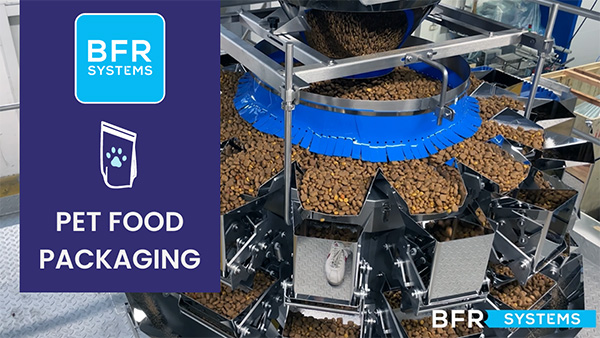Associative weighing principle
The associative principle begins with the conveyance of the product to a distribution cone via a conveyor or a vibrating system, where the quantity of the product is adjusted using a volume cell or a load cell for increased accuracy, as in the case of multiweigh®.
The cone then distributes the product to the vibrating corridors that convey the contents to the pre-dosing bins. The quantity of the product in these bins is determined by the duration of the vibrations, which can be adjusted manually or automatically.
The products are then transferred from the pre-dosing bins to the weighing bins. These are calibrated at the start of the machine and checked regularly during use to ensure constant accuracy, even in the case of residue buildup. The system selects the combinations of bins that come closest to the target weight, which is normally achieved using 3 to 4 bins. Adjusting the number of bins involved in the process is crucial for anticipating the following doses, knowing that the use of more bins improves accuracy but may reduce the rate.
.
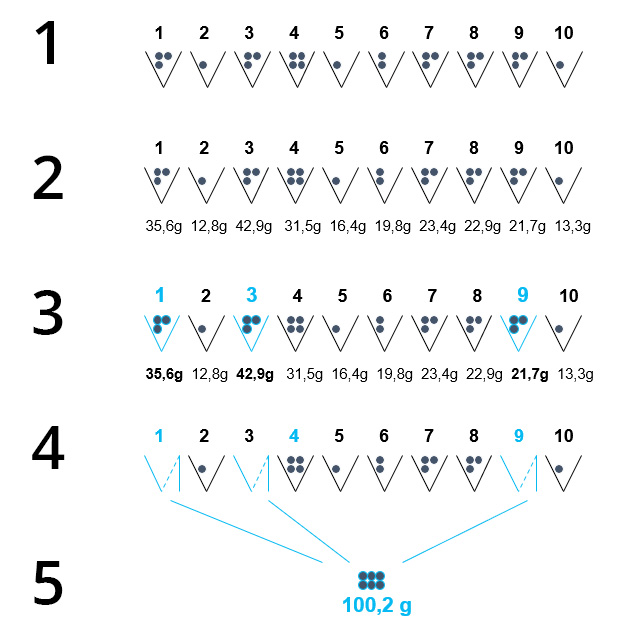
1. Pre-dosing bins 2.Weighing bins 3.The software selects the combination 4.Discharge 5.Towards the packaging machine
Why associative weighing?
To be faster!
Indeed, having multiple independent weighing heads allows for preparations of weighings in masked time.
To be more accurate!
Achieving a target weight through a combination of known sub-weights allows for greater accuracy because the weights are stabilized, and there is no ongoing product drop.
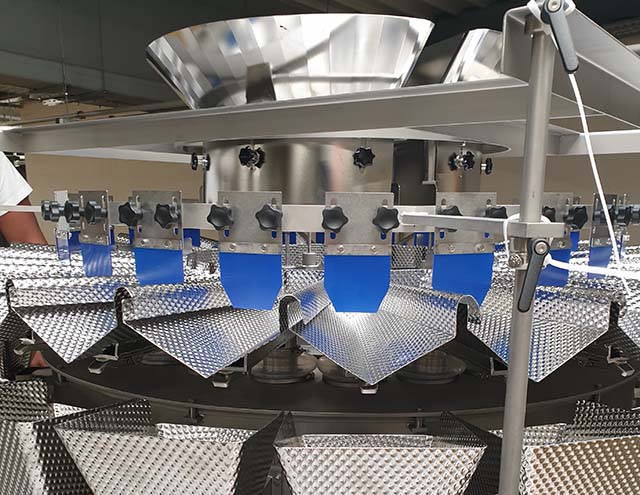
Key points of associative weighing:
Accuracy:
It is mainly dependent on the VIBRATIONS generated by the machine or its environment, which can disrupt reliability during weighing.
The stability of the platform is going to be as important as the fixing of the feed conveyors, especially if they are vibrating.
Speed:
It is also mainly dependent on VIBRATIONS, which can disturb the stabilization of the sub-weight bins and thus the software's selection possibilities for the nominal weight.
Vibrations can cause a decrease in speed of more than 30% and reduce accuracy by several grams.
Possible combinations depending on the number of heads:
- 10 heads allow for 1,023 combinations
- 14 heads allow for 16,383 combinations
- 16 heads allow for 65,535 combinations
- 20 heads allow for more than one million combinations!
Since its launch more than two decades ago, multiweigh® has established itself as a leader in the field of associative weighing, thanks to its unwavering commitment to innovation and quality.
Manufactured in Germany and recognized on the international stage, multiweigh® stands out for the precision, speed, reliability, hygiene, and excellent value for money of its weighing equipment. This reputation is based on a corporate philosophy focused on continuous innovation and total customer satisfaction, making multiweigh® a benchmark in the sector.
The advantages of multiweigh® include:
Construction:
Modular Construction:
The modular design ensures optimal production safety. In the event of an incident, specific modules can be replaced while keeping the weigher operational, thus avoiding any production downtime.
100% Stainless Steel, Washable with Large Amounts of Water:
Due to their role in the food production chain, Multiweigh products must meet very strict hygiene standards. They not only comply with legal requirements but are also available in water and dust-resistant versions, meeting IP67 standards and beyond. All parts can be disassembled without tools for quicker format changes and cleaning.
Opening/Closing of Bins by Stepper Motors:
Multiweigh weighers incorporate the "Direct Drive" system, which uses stepper motors to operate the gates without the need for springs. This increases the accuracy and efficiency of the weigher. Each "Direct Drive" module has a high-precision weighing cell and a dedicated electronic system for signal processing and motor control. This system is maintenance-free, increases the speed by reducing vibrations, and also significantly limits the noise of the bins closing.
Performance and Vibration Limitation:
The weighing module is designed to be suspended without contact with the main body of the machine, thus reducing the vibrations transmitted by it. This module, entirely autonomous, can be exchanged without needing reprogramming and is made of 2 mm thick stainless steel to prevent any deformation. The motors, integrated directly on the weighing module, help to minimize vibrations affecting other modules.
In summary, the bins operate without springs, with direct motorization free of connecting rods, which reduces wear, noise, shocks, and consequently, vibrations.
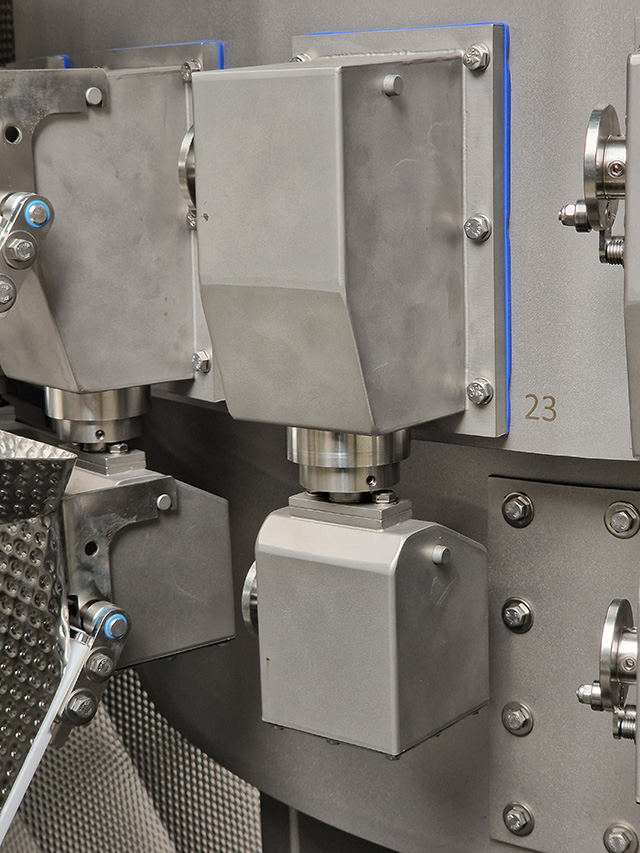
Ergonomics for Users:
multiweigh offers a variety of bin sizes, designed to be interchangeable without the use of tools. These bins are designed for quick disassembly and automatically open during cleaning, thereby facilitating the process. They allow for easy exchange during product changes and are also simpler to clean.
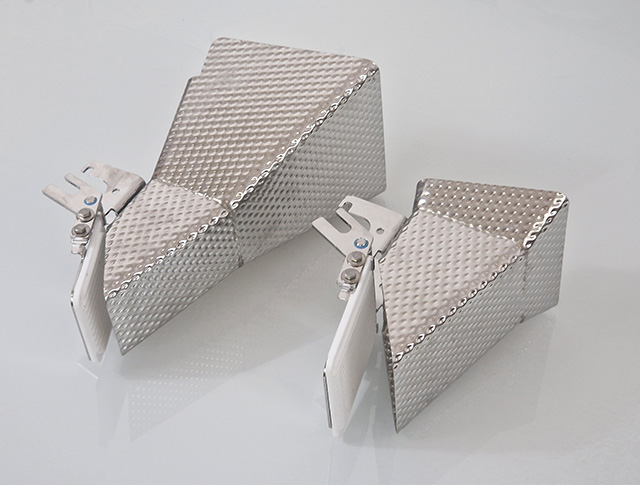
Cost Control:
Multiweigh associative weighers stand out for several reasons. They offer remarkable yield, speed, and accuracy, while requiring minimal maintenance.
Their innovative design facilitates the replacement of containers and the removal of parts in contact with the product without the need for tools. Their exceptional profitability is evidenced by thousands of high-performing installations for more than twenty years, benefiting from reduced maintenance costs.
To learn more, we would be delighted to present this to you personally upon request.



